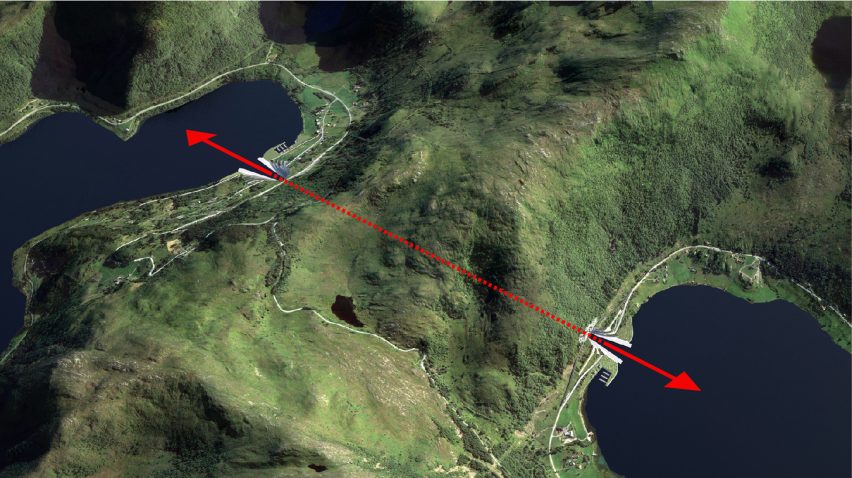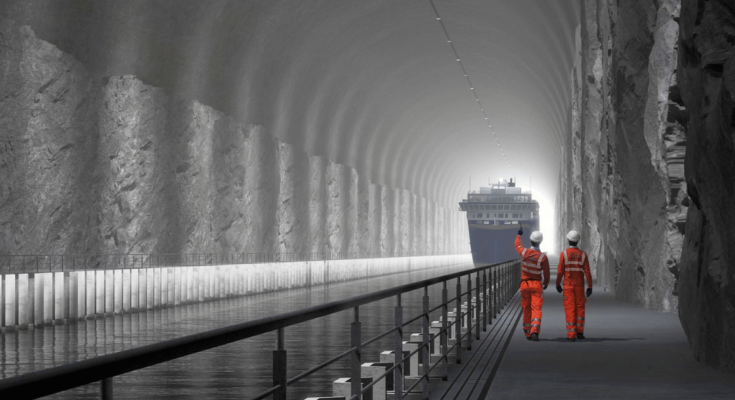A groundbreaking engineering marvel is taking shape in Norway—the Stad Ship Tunnel, the world’s first full-scale ship tunnel, designed to transform maritime travel. This ambitious project aims to provide a safer and more efficient passage through the notoriously treacherous Stadhavet Sea, which has long been a challenge for seafarers due to its unpredictable weather conditions and rough waters.

Why Is the Stad Ship Tunnel a Turning Point in Maritime Engineering?

The Stadhavet Sea, located along Norway’s western coast, is one of the most dangerous maritime routes in the region. Violent winds, powerful currents, and rough waves have historically made navigation extremely hazardous for ships. The Stad Ship Tunnel is designed to bypass these dangers, allowing vessels to travel smoothly and safely without being at the mercy of the sea’s unpredictable nature. By providing a direct and protected maritime passage, the tunnel will improve efficiency for cargo shipments, tourism, and emergency response operations.

Key Specifications of the Tunnel

- Length: 1.7 kilometers (1.05 miles)
- Height: 50 meters (164 feet)
- Width: 36 meters (118 feet)
- Capacity: Large enough to accommodate ships weighing up to 16,000 tons
- Purpose: To enable safer and faster passage for both commercial and passenger vessels
With its impressive scale and cutting-edge engineering, the Stad Ship Tunnel will be large enough to allow the passage of coastal cargo ships, ferries, and other large vessels that frequently navigate the Norwegian coast.
How Will the Tunnel Be Built?

The construction of the Stad Ship Tunnel is a monumental task that involves excavating approximately 3 million cubic meters of solid rock. Engineers will employ a “drill and blast” technique, a method widely used in tunnel construction, where controlled explosions are used to break through rock formations systematically. This process ensures that the excavation is precise, minimizing environmental impact while maximizing efficiency.
The tunnel entrances have been meticulously designed by the renowned architecture firm Snøhetta, ensuring that the structure harmonizes with the surrounding landscape. The goal is not only to create a functional maritime passage but also to integrate the tunnel seamlessly into Norway’s stunning natural scenery.
The Timeline and Future Impact
- Construction Start: 2026
- Estimated Completion: 2031
Once completed, the Stad Ship Tunnel will significantly enhance maritime safety and operational efficiency in the region. It is expected to reduce travel time for vessels, lower fuel consumption, and cut down on maritime accidents caused by extreme weather conditions.
The project is also expected to boost Norwegian tourism, as the tunnel itself will become a major attraction for visitors interested in witnessing this feat of engineering. Additionally, the increased reliability of shipping routes could provide economic benefits to local industries dependent on maritime trade.
A Historic Moment for Maritime Engineering
The Stad Ship Tunnel is more than just an infrastructure project—it is a historic milestone in maritime innovation. It represents a bold step forward in combining engineering excellence with sustainability, safety, and efficiency. Once operational, it will serve as a model for future maritime infrastructure projects worldwide, proving that groundbreaking solutions can be implemented to overcome natural obstacles and enhance global shipping networks.
As Norway leads the way with this pioneering project, the world watches with anticipation. The Stad Ship Tunnel will not only change how ships navigate one of the country’s most perilous waterways but also mark a new era in engineering ingenuity.



